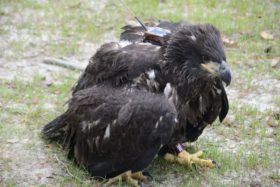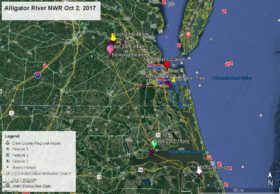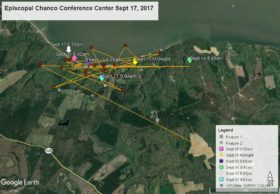James River Bald Eagle Population Sets Record
Camellia at Challedon Dr in Carolanne Farms 7/23
July 23, 2013Bald Eagle KW Released at Mariners’ Museum July 23, 2013
July 24, 2013James River Eagles Break Through
By Dr Bryan Watts, Director, The Center for Conservation Biology
The bald eagle population along the historic James River has exceeded 200 pairs for the first time in written history. The 2013 aerial survey conducted by The Center for Conservation Biology recorded 205 pairs that produced 267 young. Areas supporting the highest densities include Charles City County (46 pairs), Prince George County (31 pairs), James City County (29 pairs) and Surry County (28 pairs).
The James River population represents the best example of bald eagle recovery in the nation. By the early 1960s the once thriving population had been reduced to below 15 pairs due to environmental contaminants and by the mid-1970s no pairs remained along the river. Following the decline of banned compounds like DDT, recovery began with a single pair in 1980. Recovery was slow in the early years and as recent as 2000 the river supported only 57 pairs that produced 85 young.
Since 2000, breeding eagles along the James River have more than tripled resulting in one of the densest populations in eastern North America. The dramatic recovery reflects the resiliency of both the bald eagle and the James River. This small geographic area now supports more breeding pairs than all surrounding states with the exception of Maryland.
Photo – Dr Bryan Watts – Adult feeding chicks in nest within Charles City County






5 Comments
Way to go eagles with help from humans at the CCB!
This is an amazing recovery and it’s almost worrisome to think of what the next 10 years will bring. I hope our society can manage to value the lives of these beautiful creatures. Reese thanks for sharing Dr Watts’ article. CCB’s work is enlightening, engaging and inspirational!
Excellent! Thank you all!
This is wonderful news..thanks for sharing
Thanks, Reese. It’s so good to read about a success story and so thankful for the people that dedicated themselves to the recovery.